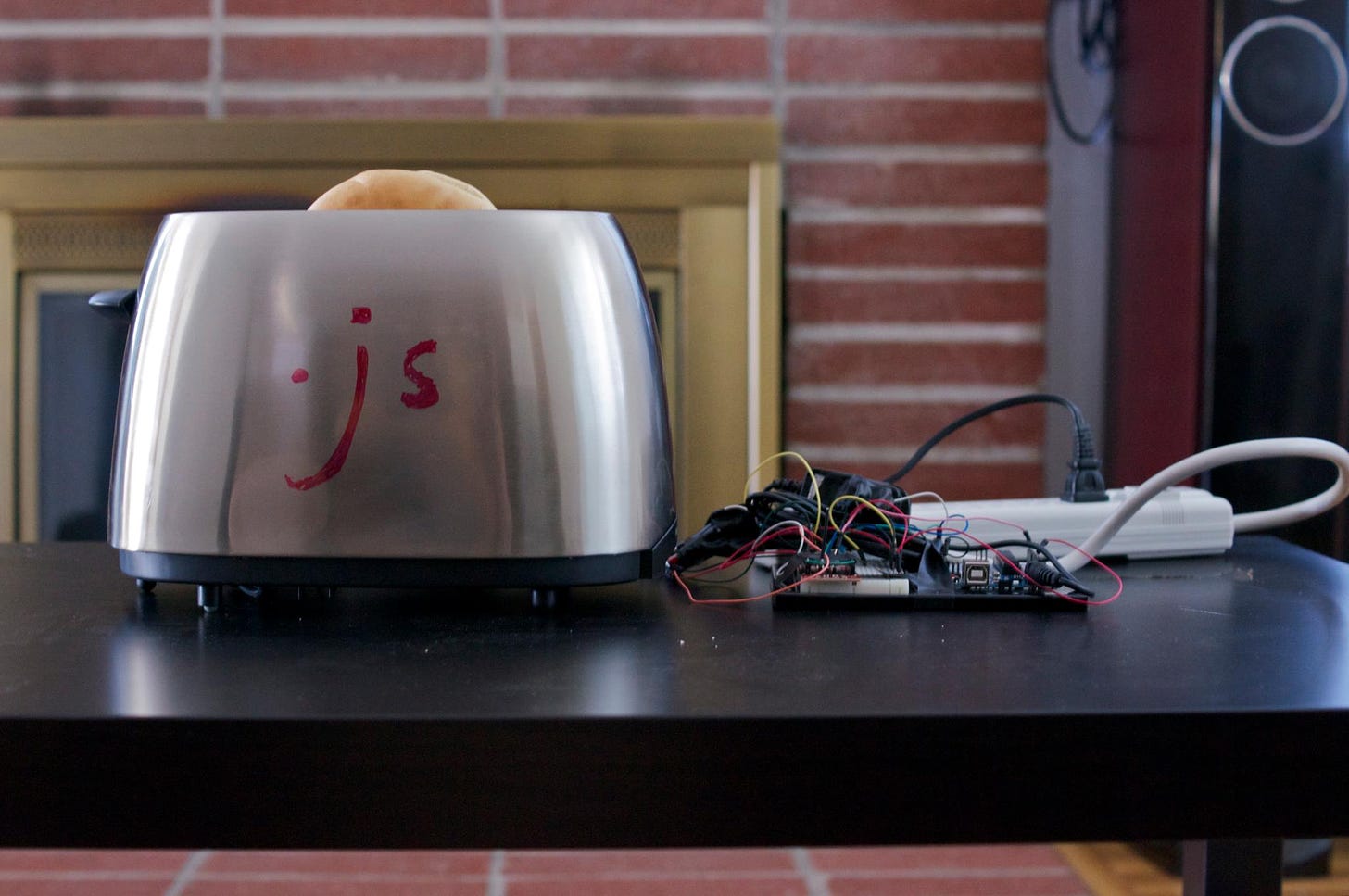Lessons from an AI building spree
During my college years, I won a bunch of hackathons. Maybe like 5 in a row. Hackathons fundamentally are all about how cool the demo is. Every time I've worked on a hackathon, I've come up with the demo first and then, worked backwards. I even remember an instance where a fellow summer intern asked me what I was doing that weekend. I said I was going to do a hackathon and win it. And I did.
In a hackathon, it really is possible to know ahead of time if you'll win it just by how cool the idea is. One year at Greylock Hackfest, we built the voice-powered internet-connected toaster pictured below (and a separate internet-connected light). Probably doesn't sound super cool to you in 2022 given Alexa and Siri. But this was 2012 and everyone was just wowed by it. I think we won 1st place and a dinner with Reid Hoffman.
Next year, we built an Oculus controlled drone. When you swung your head up quickly, the drone would do a flip. That generated quite a few audible reactions. We won 2nd place.
As you can see, the formula is simple: take 2 cool new technologies, put them together in a way that everyone can visually react to. Don't build shit like "document search for doctors". In all these hackathons, there were always people who worked on much harder technical problems and no one cared the least bit about these projects.
Good demos don't make good products
Alas, Hackathon-winning demos don't make good products.
Being in the cool demo mindset is problematic if your goal is to build products people use and build a real business.
Much like winning hackathons, getting upvotes on Reddit, Hacker News, collecting Twitter likes, etc. are all poor signals of whether something is a good product. A tech-illiterate rando on the street might be wowed by the demo but that doesn't mean it's something that's useful to them or even something that they want.

To build a business, focus on user problems
After a burst of building various ideas/demos/products, and in particularly being delusional (in hindsight) about the potential of an app like WhimsyAI….
…I’ve been thinking about these 3 simple questions a lot:
What problem is this solving for the user?
Will they pay to solve this problem?
Can I get the product in front of these users easily and cheaply?
Most ideas don’t pass the test. Of course, I might still work on them but I need to be clear with myself about why I am working on it. Is it to learn about a new technology? Is it because it’s amusing or fun? Is it because it’s a cool demo and I want Twitter likes and Hacker News upvotes? Is it because it’s a product that people want to buy?
All of these are fine reasons. But it’s important to be clear about the reason.
Being first to launch
I think I'm a little obsessed with being the first to do something cool. But in the world of building businesses, this has very little advantage.
Building a new product for the first time is really hard. You have to spend hours thinking about very basic interactions. With WhimsyAI, I tried a few different ways to implement undo:
reply with the words "undo"
"undo" button on the top right (icon or no icon)
"undo" button next to the text area.
I probably spent 3 hours testing these variations.
If someone else had built a similar product, that's 3 hours less I'd need because I could lean into their learnings. In general, copying an existing product is probably 5x faster than building it for the first time.
The advantages of not being first extend beyond product decisions. For example, all Facebook and Instagram ads are public. Having a competitor who started before you means you can draw inspiration from their marketing strategy. You get the benefits of all their painful and expensive A/B tests.
I’ve come to believe a better business strategy than being first to launch is to keep your ears to the ground. Watch what's getting traction and then build that. You can't be too late either or the incumbency advantage will be too strong by then. See Lensa vs AvatarAI.
Fast follower is the sweet spot. I would love to be in a market where there are a few older competitors.
Those are the big lessons that come to mind for now, from building 8 products in the last 3 months. Many more lessons to come, I’m sure.



